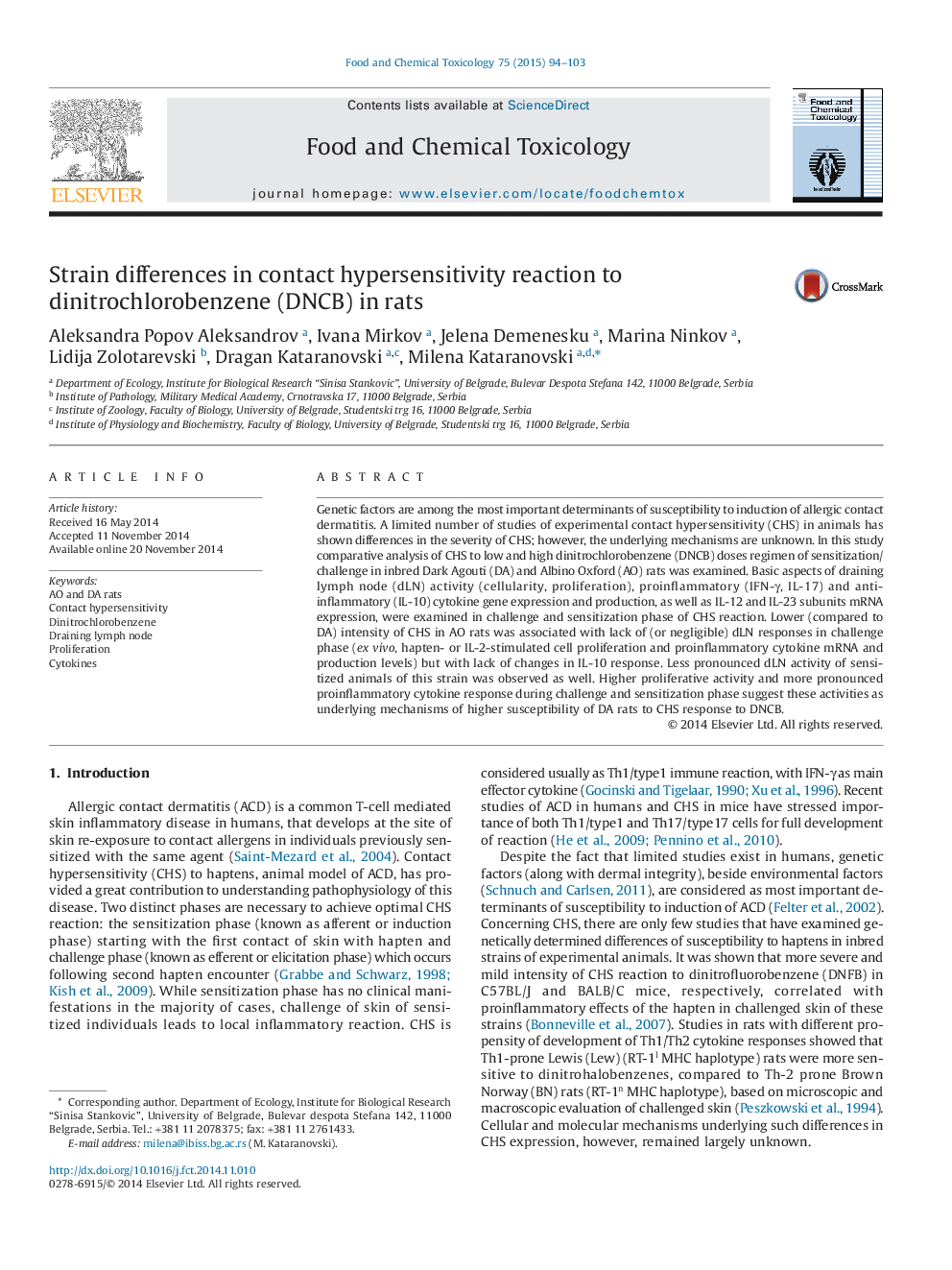| Article ID | Journal | Published Year | Pages | File Type |
|---|---|---|---|---|
| 5849867 | Food and Chemical Toxicology | 2015 | 10 Pages |
â¢Difference in the intensity of contact hypersensitivity expression was detected between DA and AO rats.â¢Prominent draining lymph node cells activity in challenge phase of contact hypersensitivity reaction was observed in DA rats.â¢Lack of (or low) draining lymph node cells proinflammatory cytokine response in challenge phase was noted in AO rats.â¢More pronounced draining lymph node cells activity following sensitization was detected in DA compared to AO rats.
Genetic factors are among the most important determinants of susceptibility to induction of allergic contact dermatitis. A limited number of studies of experimental contact hypersensitivity (CHS) in animals has shown differences in the severity of CHS; however, the underlying mechanisms are unknown. In this study comparative analysis of CHS to low and high dinitrochlorobenzene (DNCB) doses regimen of sensitization/challenge in inbred Dark Agouti (DA) and Albino Oxford (AO) rats was examined. Basic aspects of draining lymph node (dLN) activity (cellularity, proliferation), proinflammatory (IFN-γ, IL-17) and anti-inflammatory (IL-10) cytokine gene expression and production, as well as IL-12 and IL-23 subunits mRNA expression, were examined in challenge and sensitization phase of CHS reaction. Lower (compared to DA) intensity of CHS in AO rats was associated with lack of (or negligible) dLN responses in challenge phase (ex vivo, hapten- or IL-2-stimulated cell proliferation and proinflammatory cytokine mRNA and production levels) but with lack of changes in IL-10 response. Less pronounced dLN activity of sensitized animals of this strain was observed as well. Higher proliferative activity and more pronounced proinflammatory cytokine response during challenge and sensitization phase suggest these activities as underlying mechanisms of higher susceptibility of DA rats to CHS response to DNCB.
